By Ryan Hilligoss, January 21, 2022

(Ryan will also be hosting on E Street Radio Sirius/XM Channel 20 a special on Springsteen and Mellencamp. Airing times as follows: Friday 1/21 8:00am EST
Saturday 1/22 6:00pm EST, Sunday 1/23 3:00pm EST, Tuesday 1/25 4:00pm EST, Wednesday 1/26 12:00pm EST)
After more than 50 years in their recording careers, the two long time contemporaries Bruce Springsteen and John Mellencamp are finally joining forces. Mellencamps’s 25th studio album Strictly A One-Eyed Jack will be released January 21. The album features collaborations with his new big brother Bruce Springsteen on three of the album’s twelve tracks. For a guy who proclaims he has done things his own way all his life and paid an awfully high price, Mellencamp has the career, stories, and scars to prove it. While the careers of Mellencamp and Springsteen have run parallel over the last 50 years, they occasionally crossed paths but never made a connection until recently. They are now quickly making up for lost time including regular phone calls, visiting each other’s homes and more importantly, collaborating on stage and in studio.
“Bruce is my big brother now”
In September of 2021, Mellencamp called into Sirius/XM E Street Radio weekly call in show E Street Nation and talked with hosts Jim Rotolo and Dave Marsh about working with Springsteen, his long career and being lost somewhere in the swamps of Jersey.
Jim Rotolo: So how did Bruce get involved?
John: “I don’t recall how it really happened. I would consider Bruce now to be one of my better friends in the music business. Bruce and I talk quite a bit. He and I relate to each other because we’ve had similar experiences of growing up in a small town, starting out as being band leaders. We played together a few years ago. They asked me to play at Sting’s Rainforest thing and I said no. I didn’t want to go to NY and I said no. And then Bruce called me up and said, ‘Hey, why don’t you come and sing with me?’ And I thought well if Bruce is calling then I should go do it. For guys like me, Bruce put down a big footprint, and he said, here now fill it. You know I’m just a couple years younger than him, but he inspired us to work a little bit harder than we normally would. Because we all know that musicians are lazy bums.
“I told Bruce this. Back in the 80s I was playing down in Lagunas Beach and Bruce came on stage and played with me way back then. (Editor’s note: According to Brucebase.wiki. On May 26, 1988, Mellencamp performed at Irvine Meadows Amphitheater in Irvine, Ca which is near Laguna Beach. Springsteen joined Mellencamp on Dylan’s Like A Rolling Stone.) I’ve played with a lot of people and I always thought the one thing I had going for me was on stage, that I had a certain charisma on stage and that is how we got over, because I wasn’t afraid to make a fool of myself. So Bruce came on stage, and he was the only guy, I can remember this, he’s the only guy I sang with, and I’ve played with a lot of people, that I could feel his presence next to mine. I always felt like whoever I was singing with that I was overshadowing them because of my presence. But when Springsteen came on stage it was like, Jesus Christ, this guy has got some energy. But we didn’t talk or connect.
“So 30 years later when we played at the rainforest thing, Bruce and I connected. We just started talking and next thing you know we are talking all the time. And now he’s like my big brother now. I talk to him about everything and anything. It’s very fortunate that people our age can make a connection with someone else who has similar background and we have more to talk about than just meeting a fan or someone you grew up with. You know, when you grow up with somebody you have a long time to talk to them. I think both Bruce and I both feel like we don’t have that long a time to talk. Let’s try to get to know each other the best we can as quickly as possible. I think Bruce said it in his play, we only have so many empty pages left. And you want to fill those pages with people that you love and people that you care about. You don’t have time to play any fucking games, no games.”
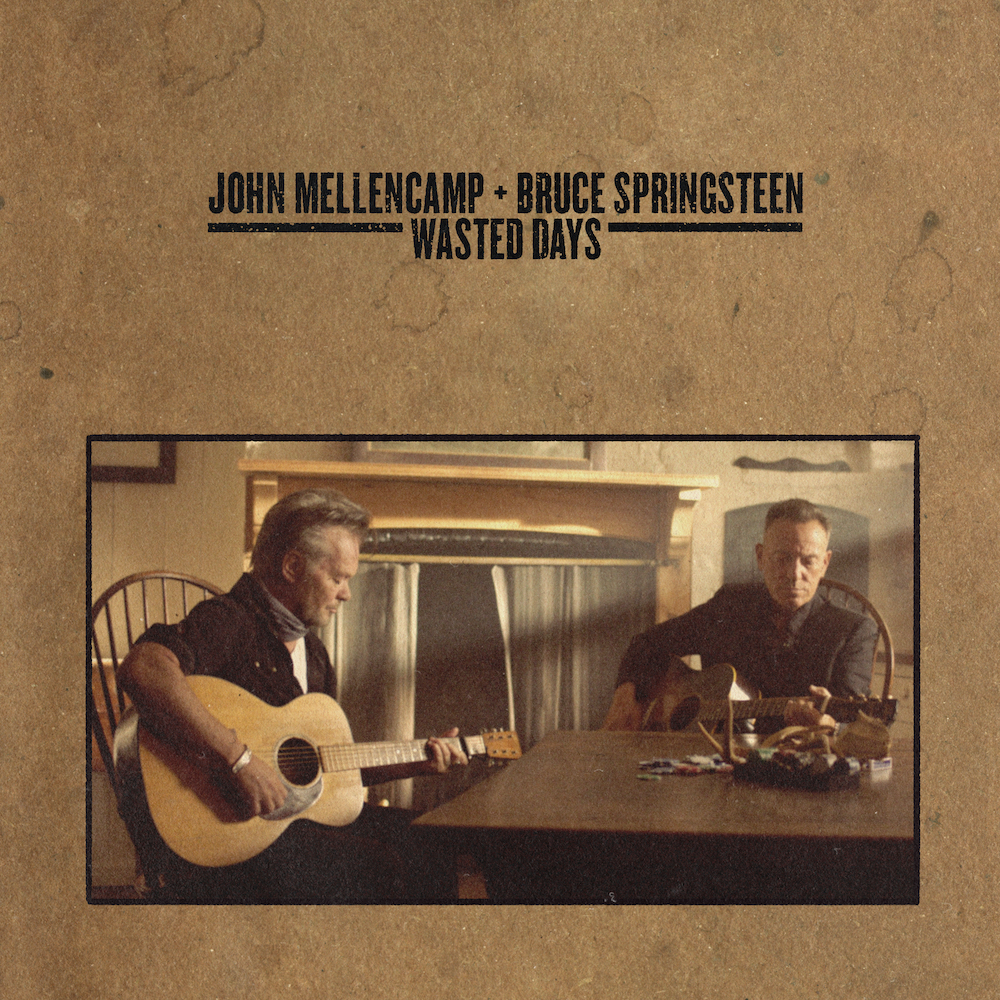
Small Town/My Hometown
John Mellencamp was born in Seymour, Indiana, a small town south of Indianapolis, very similar in size, community and background to Freehold, NJ. Mellencamp was born with spina bifida. Doctors told his parents Richard and Marilyn that he might not live very long, but a new operation procedure was tested and proved to save his life. He seems to have lived his whole life with a chip on his shoulder, feeling a need to prove to the world that his living had meaning and consequence. In both of their hometowns, Mellencamp and Springsteen and their families were looked down upon by those around them for being down the social/economic ladder. Both had serious issues and growing pains with their fathers. Douglas Springsteen famously had a barber come in and cut young Bruce’s hair while he was laid up in bed after a motorcycle accident. After one particularly nasty argument, Richard Mellencamp cut Mellencamp’s long and unruly hair. The next day Mellencamp walked around the neighborhood with a handwritten placard around his neck that said, “I am the product of my father.”
Springsteen and Mellencamp both fought hard during their early years to get out of the hometowns they thought were holding them back only to return later and be welcomed as local heroes. For years, Mellencamp has lived in Bloomington, In, 50 miles from Seymour and has his recording studio Belmont Mall close by. Springsteen lives a short car ride away from Freehold. In a recent interview, Mellencamp said, “The reason I stayed in Indiana was because all of my friends were here,” Mellencamp says. “When I was younger, people said, ‘You’ve got to move to New York. You’ve got to be seen.’ Even at 22, I said, ‘I’m not doing that. I’m not going to go to some club. This isn’t about being seen with a certain bunch of people. It’s about learning to write songs and how to make a decent record.”
Springsteen and Mellencamp started playing music at a young age, working their way into and through a series of bands, some of them integrated which didn’t always go down well with the locals. Mellencamp’s first band Crepe Soul was him as lead vocalist and front man backed by six black instrumentlaists. They played dance halls and bars, playing cover songs to earn money to spend on records and listening to the same artists and songs ranging from Bob Dylan, The Rolling Stones, The Beatles, James Brown, Motown, Stax and Elvis among many others. Mellencamp and Springsteen both struggled in school due in part to Mellencamp’s diagnosed dyslexia and Springsteen just not feeling like he fit into school’s basic structure. Both attended community college, Vincennes and Oceanside respectively, for a short time before deciding to pursue their musical dreams and passion.
Some Manager’s Mister
In 1975-1976,Mellencamp walked the streets of New York City and had tried every recording company and management company he could find in a phone book. In 1976, Mellencamp’s first management contract was signed quickly in an office with Tony Defries’ MainMan management company without reading it himself or having anyone else look it over. MainMan handled management for David Bowie and Lou Reed, both of whom were huge influences on Mellencamp. “I would have signed the bottom of a shoe at the time.” Bruce famously signed his first contract on the hood of a car without reading it or seeking legal advice. Both gave their managers control over their publishing. In spring of 1977, Springsteen emerged from his legal battle with Mike Appel. While, in November 1977, Mellencamp signed a deal with Englishman Billy Gaff, president of Riva Records and manager of Rod Stewart. John signed a deal for $35,000 for the publishing rights to his songs. Gaff was then Mellencamp’s manager, agent, record company president and publisher.
According to Paul Rees’ recently released biography Mellencamp, John said, “Back when I signed my record deal, the jobs were already taken. Springsteen had already been on the covers of Time and Newsweek, both in the same week. There was already Dylan, and Tom Petty, Neil Young, Neil Diamond and Billy Joel. The singer-songwriter slots were pretty well taken up. Then there were a lot of guys trying to do the same thing I was, right around the same time. Really good songwriters like Steve Forbert, John Prine. Nobody wrote better songs than John Prine. I was still learning to write songs. Having my name changed to Johnny Cougar was just another hurdle. Pretty much I was going to have to create my own world.”
While Springsteen had already released three albums by then, Mellencamp’s first record was released October 1, 1976 entitled Chestnut Street Incident. It can’t be a coincidence that John picked the title from the main street in his hometown of Seymour without it also being a nod to Greetings From Asbury Park and Incident on 57th Street. In 1977, Mellencamp recorded Kid Inside which wouldn’t be released until 1983 and included these lyrics, “It’s hard to justify my position/When everything I’m sayin’ can be said better by Mr. Springsteen.”
While Springsteen was type cast as one of the “New Dylans” and John Hammond wanted his first record to be one that showcased his singer-songwriter abilities, Springsteen demanded to use a band and record a rock and roll album. For Mellencamp, the studio wanted to use Jimmy Iovine as the producer for American Fool. Iovine was hot off working with Springsteen, Tom Petty and Patti Smith, but John dug in his heels and said no until the studio relented, letting him pick his own producer. That would be only the first of many battles Mellencamp would fight with his various record labels during his career.
Having grown up in Illinois, next door to Mellencamp’s home state of Indiana, Mellencamp’s music is to us in the Midwest what Springsteen’s music is to the east coast: an integral part of our lives sung in a voice and style we can relate to and understand. Mellencamp sometimes bristles at being described as being from the “heartland” because as he says, Indiana is politically a solid red state. But his sound and style are organically from where he comes and the sounds he heard growing up by often using accordion, mandolin, dobro, and fiddle, but the core of both of their sounds is the same, rhythm section, piano, and keyboards.
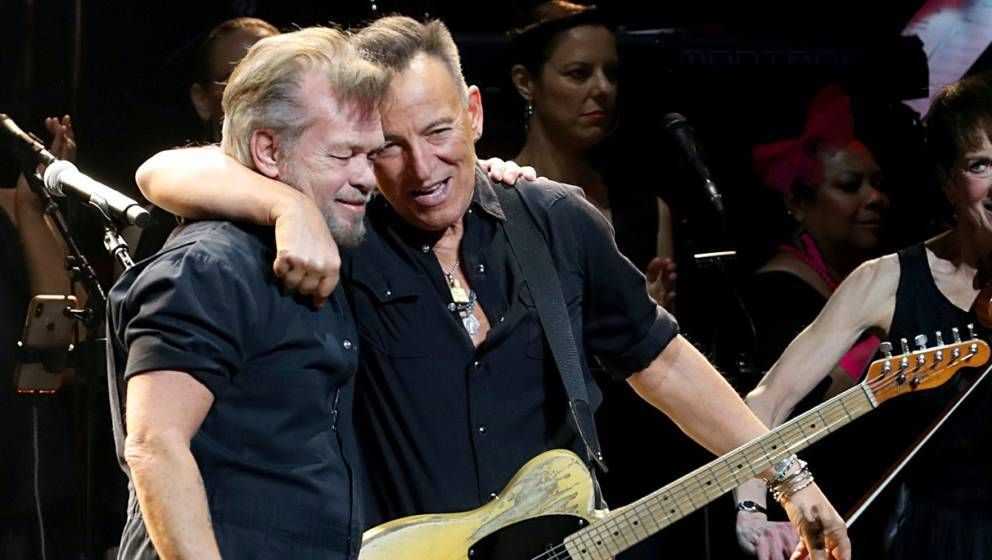
Pink Houses In The USA
In 1980, Ronald Reagan was elected president and both Springsteen and Mellencamp witnessed and reported in on the economic and political fallout. Pink Houses and Born In The USA, arguably one of their signature songs, both written and recorded around the same time, and completely misunderstood by a lot of listeners who took them as jingoistic, flag waving anthems when actually they were both studies of the darker sides of America.
On Born In The USA, Springsteen’s rage against the treatment of Vietnam Vets comes through in the lyrics: “Come back home to the refinery/Hiring man says, ‘Son if it was up to me’/Went down to see my VA man/He said, ‘Son, don’t you understand’. Just like Woody Guthrie who said, “You can only write what you see,” to explain how he came up with This Land is Your Land, one day Mellencamp was driving through Indiana when he spied an old house alongside the interstate, painted pink with a black man standing on the front porch. He went home and wrote Pink Houses in a flurry. The lyrics undercut the hooks and anthemic recording of the song with: “There’s a black man with a black cat/Living in a black neighborhood/ You know he thinks he’s got it so good.” In the second verse, autobiographical, he writes, “There’s a young man in a T shirt, listening to a rockn’ and rolln’ station/He’s got his greasy hair, greasy smile/Cause they told me when I was younger/Said boy you’re gonna be president/But just like everything else those old crazy dreams/Kinda came and went.” In just a few lines, Mellencamp lays out the lives of common Americans “paying for the thrills with bills and pills that kill” and shows the American Dream has passed by the majority of the people working hard, trying their best to make a good, meaningful life.
In 2009, Mellencamp was asked to perform at Springsteen’s Kennedy Center Honor along with Sting, Eddie Vedder, Melissa Ethridge and Ben Harper. Along with his lead guitarist Andy York and the house band, Mellencamp appeared first and performed Born In The USA. The arrangement and performance were brilliant in encapsulating both versions that Springsteen has performed, starting with an acoustic version of the first verse and then breaking into a house burning rock version for the rest of the song, ending again with an acapella outro. The rage, depression, humiliation, honesty and devastation of the character was on full display.
In Mellencamp, he says of the two songs, “A record had to sound a certain way to get on the radio at that time. It had to have hook lines. To get the general public to listen to a song, you had to cover it up, pretty much wrap it in a turd. Of course Pink Houses was really not rah rah America, but if you weren’t listening too closely, one might think it was.
It was the same thing as Springsteen did with Born In The USA. I played Born In The USA the night Bruce got the Kennedy Center Honor in 2009. I did it on acoustic guitar. It’s a beautiful fucking song. Get down to what Bruce is saying and it’s fucking fantastic. It’s art. It’s literature. I mean it’s up there with fucking Steinbeck.”
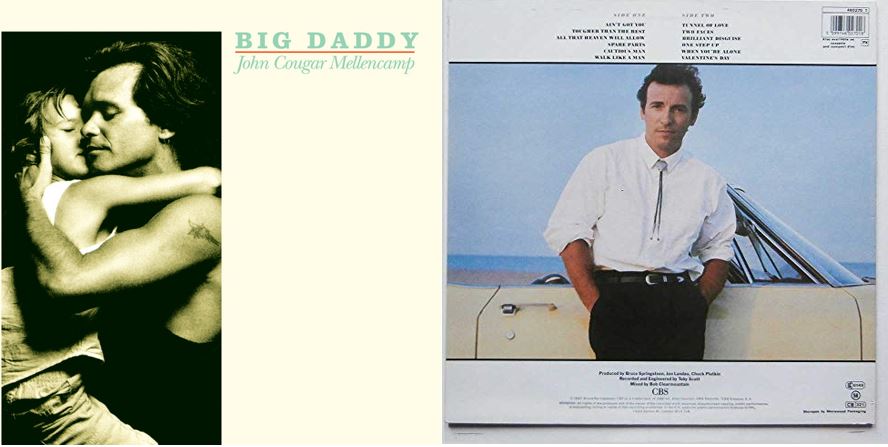
Tunnel of Love/Big Daddy
Born In The USA, Springsteen’s biggest selling album of his career released in 1984 followed by a massive tour which propelled him into the music stratosphere. Mellencamp released Scarecrow, second biggest selling album of his career in 1985 and Lonesome Jubilee in 1987, followed by the biggest tours of his career. Both of their albums and tours launched them into superstardom only to both peak and run into a brick wall emotionally, mentally, physically, etc after running themselves ragged. Both followed up their careers with introspective albums and change of direction with Tunnel of Love for Springsteen in 1987 and Big Daddy for Mellencamp in 1989. Springsteen explored adult themes of marriage and building an adult identity. Mellencamp, who became a father before he graduated from high school, was on his second marriage and becoming father to more children, struggled with the same topics and wounds as Springsteen with songs like Void In My Heart, Big Daddy of Them All and Mansions In Heaven.
In Pop Singer, Mellencamp vented some anger while burning some bridges and public image with these lyrics, “Never wanted to be no pop singer/ never wanted to write no pop songs/Never had no weird hair to get my songs over/ Never wanted to hang out after the show/Never wanted to have a manager over for dinner/Never wanted to hang out after the show”. In 1995, Springsteen released The Ghost of Tom Joad which contained his kiss-off song to fans and critics who didn’t appreciate his best efforts at making music without the E Street Band, My Best Was Never Good Enough which contained these lyrics: “Stupid is as stupid does and all the rest of that shit/Come on pretty baby, call my bluff/but for you my best was never good enough.”
In 1994 at the age of 42, Mellencamp suffered a major heart attack due to genetics, high cholesterol, constant coffee intake and years of smoking. When told by doctors to stop with some of his addictions, he replied, “A heart attack isn’t a good enough reason to quit.” Experiencing a life changing event made Mellencamp take account of his life and career which set him on a path that would ultimately lead him years later to where he wanted to be from day one: making music and records he wanted to make without worrying about studio executives’ directives or pleasing anyone else.
Crossroads
On first glance, the relationship between the two artists seems distant, but there have been numerous times when the two have rubbed shoulders in various ways.
- A Very Special Christmas album. Mellencamp with his cover of I Saw Daddy Kissing Santa Clause and Springsteen’s cover of Merry Christmas Baby
- RR HOF members, Springsteen 1999, Mellencamp 2008
- Both have incredible recorded covers of Bob Dylan with Springsteen’s Chimes of Freedom featured on the EP off the same name released in 1988 and Mellencamp’s version of Farewell Angelina released on Rough Harvest in 1999.
- Both won the John Steinbeck award, Springsteen in inaugural 1996 event and Mellencamp in 2012. The award is given to artists who capture “Steinbeck’s empathy, commitment to democratic values, and belief in the dignity of people who by circumstance are pushed to the fringes”.
- Both won Woody Guthrie award, John in 2018 and Bruce in 2021.
- Both performed at Pete Seeger 90th Birthday celebration held at MSG, NYC
- We Are One Inaugural 2009, Bruce played The Rising and with Pete Seeger on This Land Is Your Land. Mellencamp performed Pink Houses along with his guitarist Any York. After the event, Mellencamp left town quickly. According to sources, Springsteen saw York backstage and said, “That was great. Tell John Pink Houses still stands up after all these years.”
- 2015 Musicares salute to Bob Dylan. Mellencamp performed Highway 61 while Springsteen performed Knocking On Heaven’s Door along with Tom Morello
- 1988, both played on Folkways: A Vision Shared- A Tribute to Woody Guthrie and Leadbelly. Mellencamp with Do Re Mi and Springsteen with I Ain’t Got No Home and Vigilante Man
- Crystal Talefrino, sang backup and percussion with John starting on Scarecrow Tour through the recording of Big Daddy in 1989. She worked with Bruce on Human Touch/Lucky Town Tour.
- John Hammond saw Bruce as a singer songwriter like Dylan and John was seen as the next Neil Diamond which was laughable. A kid from the farm fields of Indiana was being compared to a Jewish kid from Brooklyn who was an established Brill Building writer. None of the comparisons were fair to any of the artists involved and typifies the uphill battles both artists fought with their labels and managers to be the artists they envisioned for themselves.
- TCM work. In 2019, Springsteen teamed with Ben Mankiewicz to talk about and introduce two of his favorite movies, The Searchers and A Face In The Crowd. Earlier this year, Mellencamp teamed with TCM to reflect on the role of American small towns in cinema. In September, he served as a guest programmer and picked the following movies: Tortilla Flat, The Misfits, On The Waterfront, The Fugitive Kind, East of Eden and Cool Hand Luke. Paul Newman’s character epitomizes the way John has lived his entire life: a rebel who does things his own way and has paid an awful high price. https://www.youtube.com/watch?v=OMcwpW-VBEY
- Both look for other artistic outlets while also continuing to make music. Mellencamp has been painting for decades now, spending countless hours in his art studio. Springsteen has collaborated with Thom Zimny to make some incredible documentaries for Darkness, The River and Born To Run as well as Western Stars and written a stunning autobiography.
- As band leaders and front men, both learned from masters. Mellencamp learned his stage craft from watching Ray Davies lead the Kinks while touring with them in his early career. Springsteen has said he watched Sam Moore work at a club in Fort Dix, NJ to learn how to work a crowd with call and response and charisma, how to build up the tension in the crowd and then bring it back down and built it up again over and over.
- Both had similar recoding styles in their early stages of their careers with often having fragments of melodies and lyrics, running them by the band members and then making up the parts and finishing touches along the way with contributions from each of the band members.
- Both avoided drugs and alcohol as a way to stay in control of themselves, those around them and the pursuit of their art.
- Both were earlier in their careers demanding perfectionists in the studio, of themselves and of the band members
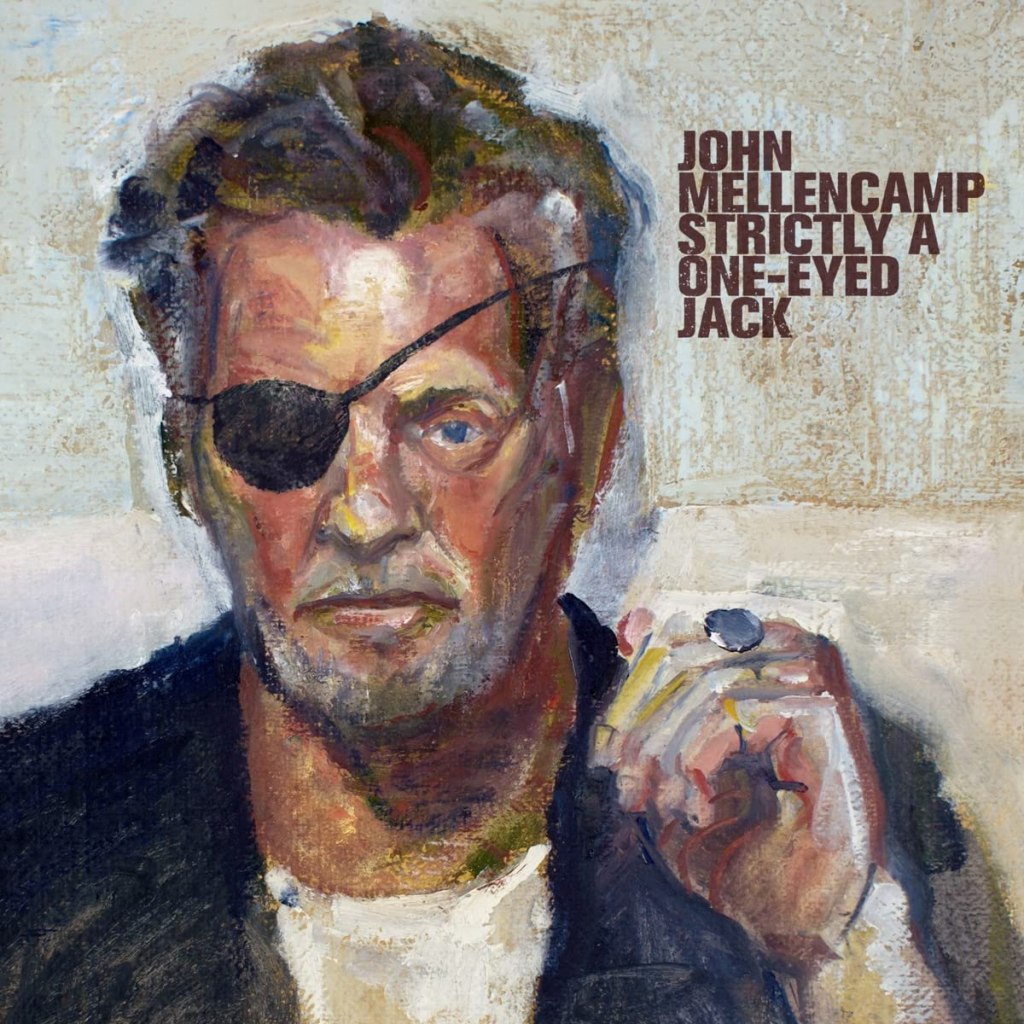
Wasted Days/Simply A One-Eyed Jack
During the interview with E Street Radio, Dave Marsh asked Mellencamp about the upcoming album and its structure.
“They’re all original songs. The record was started before the pandemic. We were about halfway done with it. So that year gave me an opportunity to walk away from the project and not think about it and come back and say, this is what we need to do. At this point in time, I try to find one line of honesty to get me started in the song and no matter how bleak or how happy the song is or turns out…I let the song write itself. I don’t try to control the songs anymore. When I was a kid, I tried to control it. I can’t say that, I want to say this. I don’t do that anymore and I haven’t done it for years. The songs are just sent to me. I sometimes have a hard time writing them down and recording them on my cassette player quick enough. I don’t sit down and say, Oh I want to write about this, that doesn’t happen anymore. The songs are just sent to me. I’m just a conduit. I have to listen to the songs and think, what is this song about. Because there’s no pretense. That’s just the way it worked out for me.
When asked what it was like to collaborate with Springsteen and Zimny, Mellencamp said, “This is going to sound awful but, I was always in charge. But with Bruce, I have respect for Bruce. There’s a couple guys I had admiration for that was Woody Guthrie, Bob Dylan and Bruce Springsteen. That is pretty much it, the rest I pretty much didn’t give a shit about. I didn’t care a lot about bands that were popular. I never wanted to be part of anything. I never wanted to be part of the punk movement. I just wanted to be me. I took me a while to find my feet. What was different about working with Bruce was I was working on my backfoot. I’m not a good collaborator. It was always ‘this is my band; we do things my way’, and Bruce is the same way. But with Bruce I was on my backfoot and if he had a suggestion I listened. Generally, people would make a suggestion and I would go, ‘OK I’ll take that into consideration but with Bruce it was like ‘oh that might work’. It’s different when you’re working with someone you respect as opposed to someone who maybe works for the record company who suggests, maybe work with this one person on a duet for maybe air play reasons or some stupid shit like that.”
When asked about working with Thom Zimny for the video for Wasted Days, “Again, I was working on my backfoot. To be perfectly honest, if I never make another video in life, I don’t care. Nobody wants to see a fucking old man dancing around anyway. It was Bruce’s idea to make the video. He said ‘I have this great guy’ and he showed me some of the work Thom had done and I said ‘yeah, I don’t care’. And I just went along with whatever these guys wanted to do. Because ultimately and finally fellas, at my age, there’s no reward for being right. I thought when I was a kid I had to be right all the time. I don’t have to be right. Because in a few years, people aren’t going to care if I was right or wrong, they are just going to say ‘Well, Mellencamp didn’t live forever but it sure seemed like it.”
Further On Down The Road
Rotolo: So you were recently in New Jersey?
“I didn’t know where I was at. I’m not sure Bruce really neither but, we found our way to a restaurant. It was pretty funny. I had to sit back and just smile at Bruce because people came up to him and said things that I kind of just went…wow. Poor guy. We walked about 4 blocks. In NJ, everybody knows Bruce and it was funny. As a matter of fact, I was talking to Bruce about doing something together and he said, ‘Well is it going to be like you coming to NJ?’ and I said, no quite honestly it will be quite the opposite. You’ll be lucky to see a car.”
I am hesitant to even raise the issue here but I feel like it would is a disservice for anyone to compare the two artists and John has been stuck with label “poor man’s Springsteen” by some over the years. The comparison is unfair between the two because neither was competing with the other. Just like contemporaries Bob Seger and Tom Petty, they might have all been watching each other from the corner of their eyes, but it was to just get a lay of the land, not out of a competitive drive. Mellencamp and Springsteen have created art that speaks to them based on very similar influences and tastes. Both of them have characters that speak in plain language they speak in their very day lives and that’s why we can relate to the songs and characters.
In an interview from 1.20.18, Howard Stern asked John to speak to that concept:
Howard: “Who was the big competition? The Eagles, Springsteen?”
Mellencamp: “It was always incorrect. We’re two different artists. Because he’s a better songwriter than me. You know, I give. I think Bruce Springsteen could have been the greatest pop song writer of our generation if he had wanted to be. But he didn’t want to be. Everyone talks about his lyrical content…his melodies sometimes are jaw dropping. It’s like how can a guy make such beautiful melodies out of three chords, and he would do it.”
Recent interview with Anthony Decurtis, ““Listen, I’ll just flat-out say it: I love Bruce,” Mellencamp says. “I love him like a brother. I feel very fortunate to have found a colleague and a good friend in him. This should have happened years ago.” In addition to performing on Strictly a One-Eyed Jack, The Boss ventured even further into Mellencamp’s world when he stayed at his house in Bloomington. “Bruce and I have done two paintings together,” John declares with evident pleasure. “We have a painting that we worked on for two days straight. He painted one side and I painted the other. Bruce had never painted at all and he was really good, really into it. I was surprised at how hard he tried. He was like, ‘How do you do this, John? How do I make this work?’ We’re trying to figure out how to sell it and give the money to charity. But I was proud of him. He went after it.”
Anthony Decurtis, https://www.indianapolismonthly.com/longform/john-mellencamp-aint-even-done?fbclid=IwAR1Q1gcJF0QmavDQhxuWt_1CfbHf4JgH2DdetIFkx2auT2Tr_Yi8d5qwXkQ
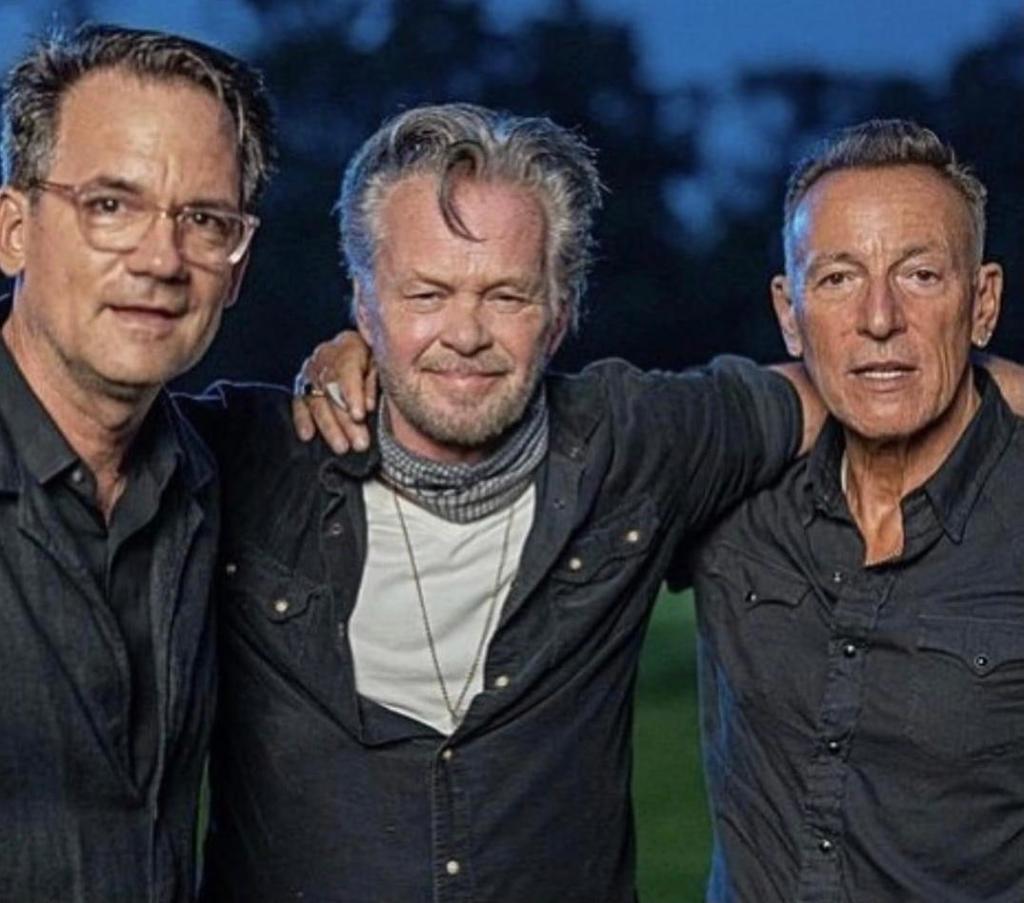
L to R, Thom Zimny, John Mellencamp, Bruce Springsteen. Colts Neck, NJ
50 years Burning Down That Road
Both artists are now working into their 6th decade. John has made 24 albums, with his 25th slated to come out in early 2022. Springsteen has made 20 studio albums. Since 2000, Mellencamp has released 8 albums and Springsteen 9 along with box sets and other works. Both have done some of the best work of their careers since in the last twenty years. Mellencamp’s 2008 release Life, Death, Love and Freedom and 2010 No Better Than This stand out to this listener and fan. Springsteen’s Magic, Wrecking Ball and Letter To You rank as some of the best work of his career. Both have made drastic changes to some of their classics. During the Seeger Sessions tour, Springsteen worked up different arrangements and instrumentation for classics such as Blinded By The Light and Atlantic City. In Mellencamp’s case, he has restructured his shows, often played in theaters to include a three-part play: an acoustic set with the band, an acoustic set with just him and his guitar, and a full electric band set. He has restructured some of his classics including Small Town and even Jack and Diane. I’ve attended at least one show wherein he didn’t play Jack and Diane at all and fans were left scratching their heads and pissed off.
Both artists have long stood for their principles on and off stage. While Bruce withstood the ire of NY police by performing 41 Shots, Mellencamp began taking a knee at the end of Easy Target in 2019 during the Colin Kaepernick controversy. Both took heat from conservative fans during GW presidency by writing, recording and performing songs like Magic, Last To Die in and Living In The Future and Mellencamp’s Rodeo Clown and To Washington which is a repurposed song from Woody Guthrie. Both have stood for their principles for decades in recordings, on stage and in their personal lives with how they chose to spend their time volunteering for various causes. Bruce for Vietnam Vets, food banks and John for small American farmers, BLM and racism with Cuttin’ Heads which features Chuck D.
Springsteen and Mellencamp have worked hard pursuing their musical vision for well over 50 years. They both believe that hard work, a strong work ethic and honing their craft is a lifelong job, like the families and communities they come from. They honor their parents, friends and family by getting up each day and going to work, shackled and drawn. Mellencamp says it best in this quote from Mellencamp, “If you see some guy who’s happy all the time, there’s something fucking wrong with him. He’s on drugs or drunk. Happiness is a very small commodity and the idea that we live to be happy is just fucked up. It’s wrong. We live to work. And we should toil like galley salves and try to find happiness in our work. That’s what life is about. People who think, “Oh I can’t wait to get down to the pub, have a drink and I’ll be happy.’ No! That’s not happiness. It’s being drunk. Happiness is a fulfillment that’s internal. It fulfills the mind, the body and the soul. And it doesn’t come at the bottom of a bottle or the end of a fucking needle.”
Mellencamp and Springsteen are hard core troubadours, observing the world around them, catching snippets of conversation of passersby, watching the news, turning their observations in to character studies, anthems and ballads that speak to the universal truths of the human condition. They see those around them striving for a place to fit into, a community, a family, love and kindness. They are both adult artists who realize that train is coming down the tracks, bearing down on them and there are only so many years and days left. As Springsteen has said, “That light coming down the tracks helps focus the mind.” They both have been making some of the best music of their careers in the last twenty years, improving their craft as they move along while grappling with aging and everything that comes with it like to loss of friends and family. They are honest about themselves, their strengths, and weaknesses. They give us a blueprint on how to age with grace, humility, and honesty. They show us how to walk tall.
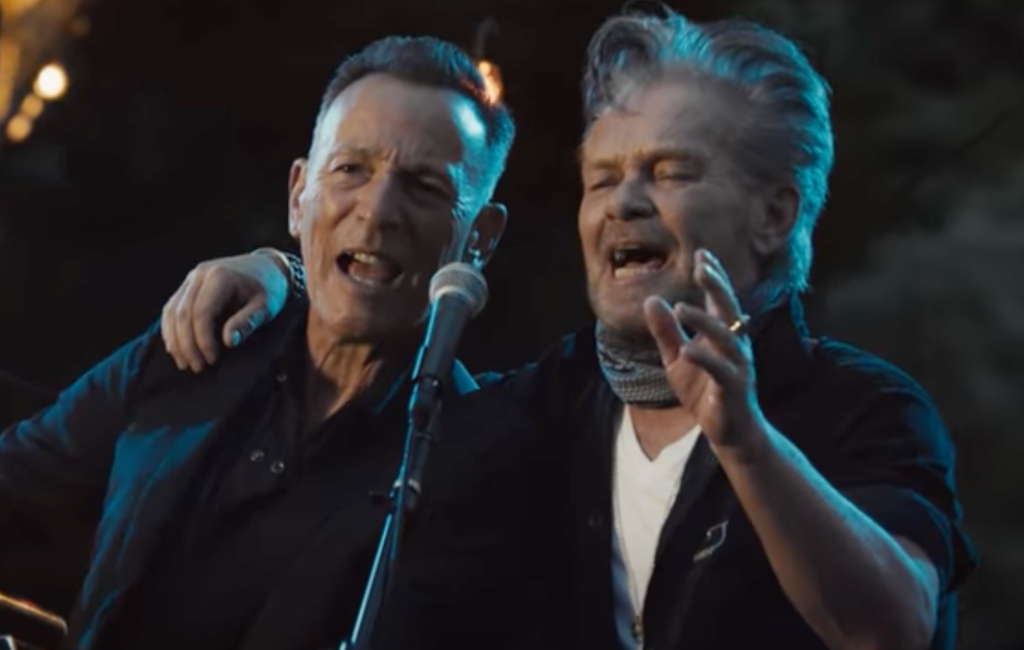

Fantastic profile of two of the most important artists of our time. 👍
I admire the research and the in-depth approach to this profile. I learned quite a bit. Thank you. Well done.